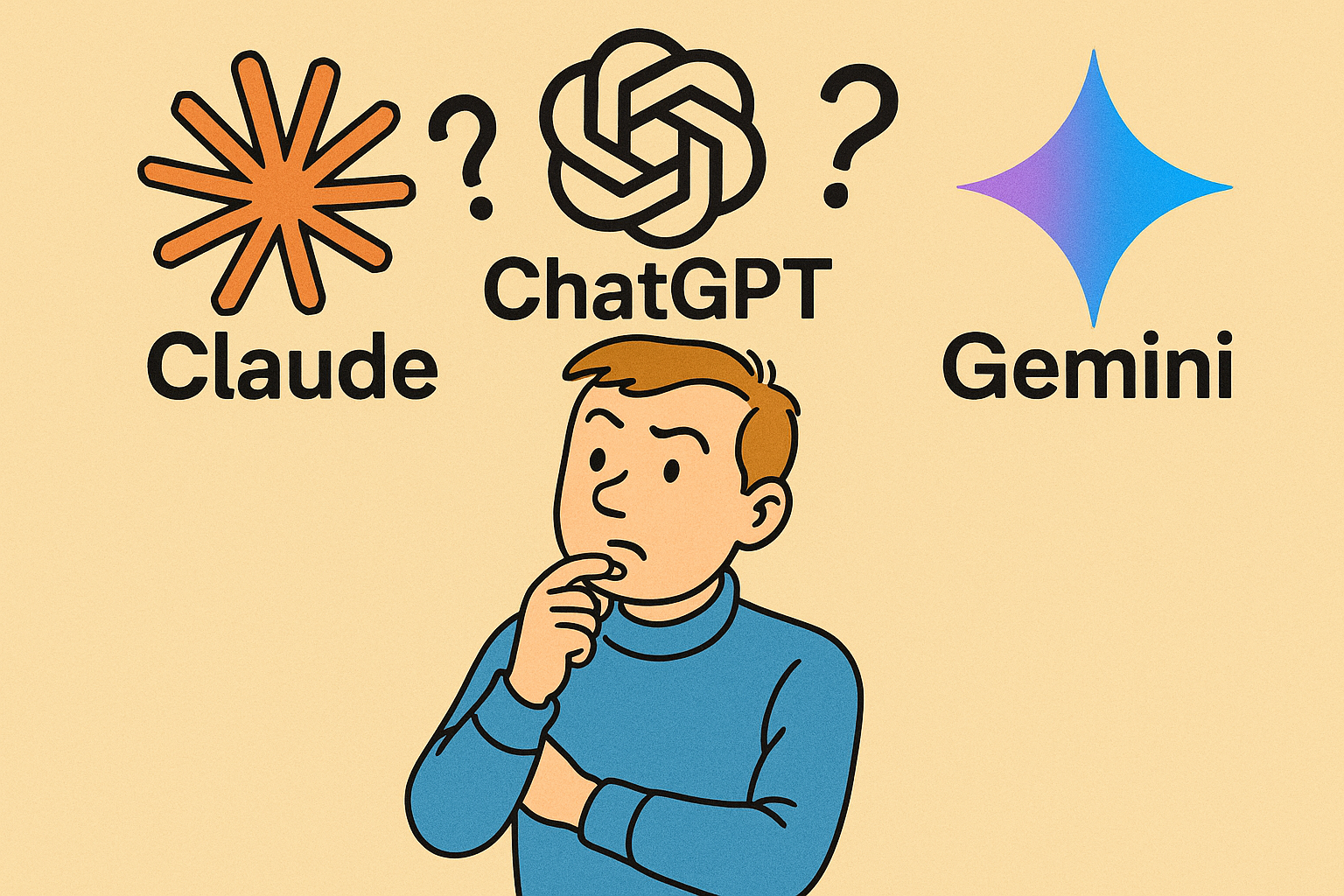The Real Problem with AI Today? Nobody Knows What Works Tomorrow
I’ve been living in AI tools for the past year. Multiple subscriptions, endless experiments, daily workflows built around these systems. And I’m starting to think we’re all participating in the world’s most expensive beta test.
Here’s how my mornings go: Yesterday’s perfectly functioning ChatGPT woke up stupid. The code that was flowing like water twelve hours ago now reads like it was written by someone who just discovered what a semicolon is. So I jump to Claude – except artifacts decided to take a vacation. Fine, Gemini it is. Works brilliantly. For exactly one day.
Then we reset the whole circus.
The Great Instability Crisis
Browse any AI community and you’ll witness a fascinating phenomenon. Half the posts are people convinced their AI tool had a lobotomy overnight. The other half are discovering that some random update made their previously useless tool suddenly brilliant. It’s technological whiplash.
The explanations we get are beautifully meaningless. “Backend optimizations.” “Model improvements.” “Training updates.” Might as well say “we changed some stuff” and call it a day.
But here’s what kills me – I’m paying premium prices for tools that fundamentally change their behavior without warning. Imagine if Microsoft Word randomly decided that today it only writes in iambic pentameter. That’s the level of consistency we’re dealing with.
Racing Toward Mediocrity
The competition between AI companies has created this bizarre dynamic where everyone’s sprinting to release features that barely work. OpenAI sees Claude’s artifacts and panics. Google watches GitHub Copilot and scrambles. Everyone’s so busy keeping up with everyone else that nobody’s actually finishing anything.
Remember OpenAI’s coding assistant launch? It had all the polish of a middle school science project. But hey, Claude had one, so out it goes. Ship now, fix later – except “later” never really arrives because there’s always another half-baked feature to rush out.
The Stability Manifesto
Let me paint you a picture of what we actually need.
Version Dichotomy
The Linux world figured this out decades ago. You want cutting-edge chaos? Here’s your rolling release. You want to actually get work done? Here’s Debian Stable, unchanged since the dawn of time.
Give me ChatGPT-Stable that updates quarterly with actual testing. Let the adrenaline junkies play with ChatGPT-Edge where every refresh is a new adventure. I’ll take boring reliability over exciting uncertainty every single time.
Purpose-Built Models
This obsession with omni-models needs to die. I don’t need my code assistant to write poetry. I don’t need my creative writing tool to debug Python.
Anthropic almost gets this with their Opus/Sonnet/Haiku split, but even they’re muddying the waters. OpenAI? Their model naming looks like someone got drunk with a label maker. GPT-4, o1, o3 (apparently o2 was too mainstream), various “turbo” versions that may or may not exist anymore, and enough “mini” variants to stock a convenience store.
Pick. A. Lane.
Naming That Doesn’t Require a Decoder Ring
I challenge anyone to explain OpenAI’s naming convention without sounding like they’re reading from a random number generator. We’ve transcended confusion and entered the realm of performance art.
The Productivity Paradox
Every workflow disruption costs me 20-30 minutes minimum. Not just the switching – the testing, the adapting to different interfaces, the rewriting prompts that worked yesterday but fail today.
Scale that across millions of users. We’re hemorrhaging productivity in the name of progress. The tools designed to make us more efficient are becoming the biggest efficiency drains in our workflow.
I’ve started keeping a spreadsheet of which model works best for which task on which day. That’s insane. I’m doing data analysis just to figure out which AI can do data analysis.
An Alternative Universe
Picture this: You wake up knowing exactly how your AI tools will behave. Your carefully crafted prompts work the same way they did yesterday. The model that excels at code generation still excels at code generation. Revolutionary concept, I know.
Some radical proposals:
Stability Contracts: Guarantee model behavior for minimum 90-day periods. Not “mostly the same with minor tweaks.” Identical. Frozen. Immutable.
Real-World Beta Testing: Stop testing on production. Those “minor updates” that break everything? Maybe catch those before inflicting them on paying customers.
Transparent Change Logs: “We reduced latency by 50ms but code generation accuracy dropped 3% in recursive functions” beats “performance improvements” every time.
Feature Moratorium: Declare a six-month freeze on new features. Fix what exists. Make it bulletproof. Then, and only then, add the next shiny thing.
The Excellence of Mundane Consistency
We’ve confused innovation with instability. The most innovative thing any AI company could do right now is… nothing. Stop touching things. Let them work.
I don’t need my AI assistant to be marginally smarter next week if it means it might be catastrophically dumber instead. I need it to be boringly, predictably, reliably competent.
The market leader won’t be whoever scores 0.5% higher on some benchmark nobody understands. It’ll be whoever first realizes that professionals need professional tools – tools that show up ready to work every single day, not tools that require a morning diagnostic to determine today’s personality.
The Reckoning
Here’s the truth these companies need to hear: Your users aren’t beta testers. We’re not excited by surprise feature drops that break our workflows. We’re not impressed by rush-released features that sort of work sometimes.
We’re exhausted.
The AI revolution promised to augment human capability. Instead, we’re spending our augmented capability figuring out why our augmentation tools stopped working.
So here’s my challenge to the AI giants: Be brave enough to be boring. Be innovative enough to be stable. Be competitive by being consistent.
Because right now, the most disruptive thing in AI would be reliability.
Are you thriving in this chaos, or are you also maintaining spreadsheets to track which AI is having a good day?
